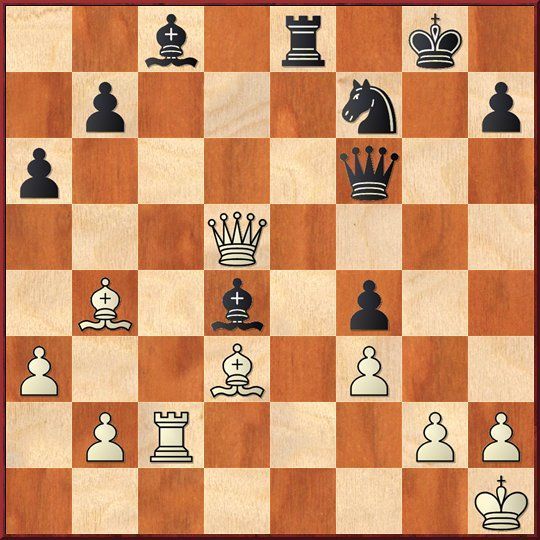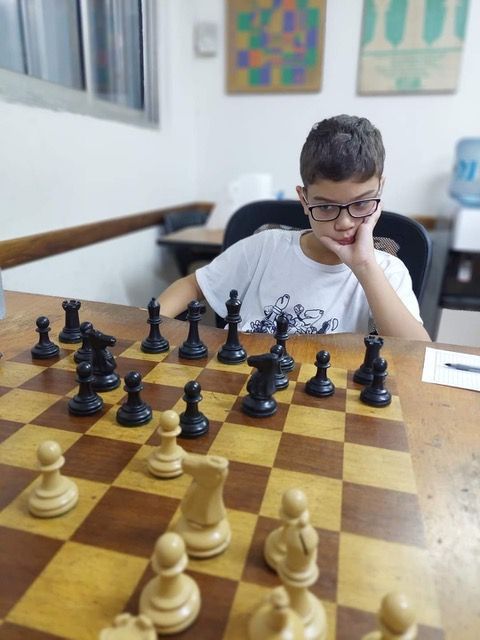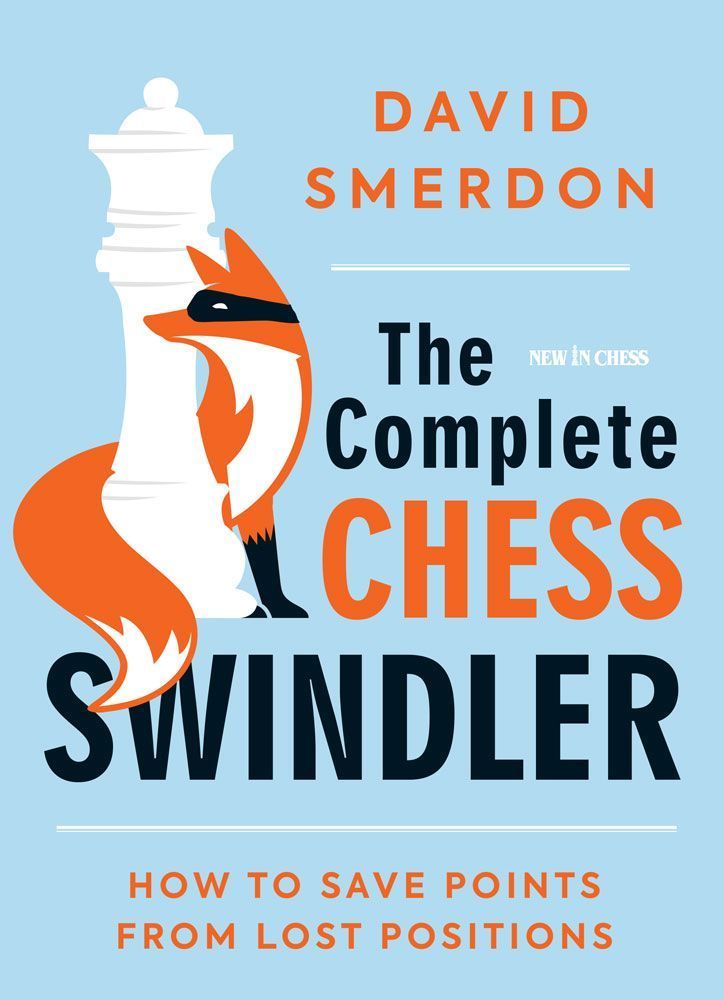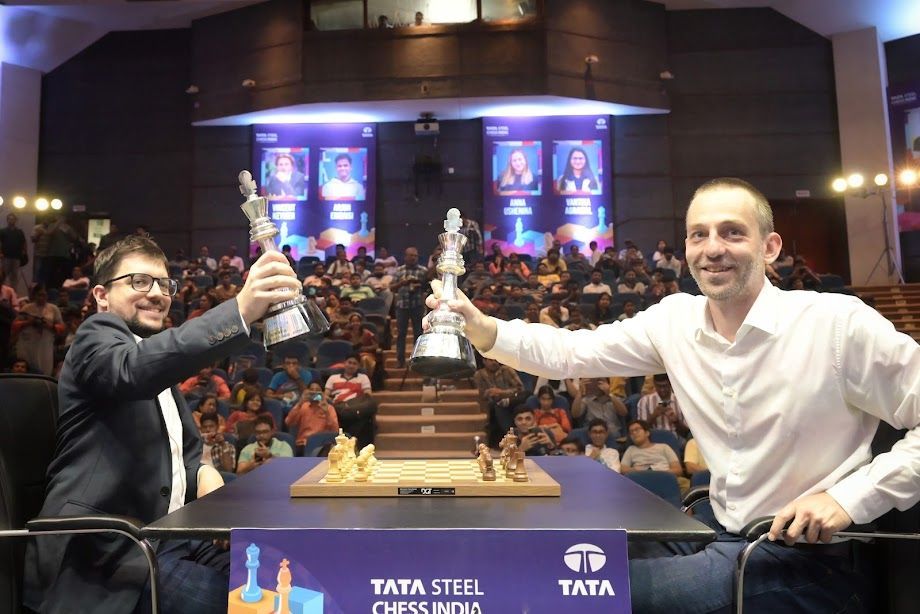Thrice Vice
Third time’s the charm, so the old saying goes. But not so for Levon Aronian when he faced Ian Nepomniachtchi in the WR Chess Masters in Dusseldorf, Germany, as a rare miscount witnessed the tournament leader’s claim for a three-fold repetition not only being rebuffed by the arbiter, but also serving to finally wake his opponent up from an uneventful draw slumber.
Going down the home-stretch, Aronian went into Round 7 with a full-point lead over the field and only needing three draws for probable victory - but as a draw with Nepo looked to be on the cards, Aronian’s claim proved to be incorrect, with the game continuing, and his opponent receiving a bonus two minutes added to his clock

Even with the false claim, everyone expected the correct three-fold repetition to follow when the game resumed again - but Nepo, after six successive draws, had decided that he now had the psychological edge in the clash and pressed for more, explaining in his post-game presser that “I felt like maybe if he wants a draw that badly, then I should push.”
The mind-games were definitely in play by now, as Aronian may have felt that the draw was just within his grasp with each series of repeated moves - but each time, Nepo avoided repeating to push just a little more and just a little more. And with it, Aronian eventually cracked as he lost the plot and the game as he stumbled into a bad blunder.
That cruel loss from Aronian unexpectedly blew the tournament wide-open once again, allowing Gukesh D to catch up with the tournament leader following some inventive play from the Indian teen as he beat Andrey Esipenko. Aronian and Gukesh D share the lead on 5/8 going into Saturday’s final round, but just half a point behind lurks a now reinvigorated Nepomniachtchi.
Standings:
1-2.
Gukesh D (India), L. Aronian (USA) 5/8; 3.
I. Nepomniachtchi (FIDE) 4½;
4-5. V. Keymer (Germany), W. So (USA) 4;
6-10. JK. Duda (Poland), A. Esipenko (FIDE), A. Giri (Netherlands), N. Abdusattorov (Uzbekistan), R. Praggnanandhaa (India) 3½.
GM Levon Aronian - GM Ian Nepomniachtchi
WR Chess Masters, (7)
Queen’s Gambit Declined
1.d4 Nf6 2.c4 e6 3.Nf3 d5 4.Nc3 Be7 5.Bf4
More common in the QGD is 5. Bg5, but this flexible move is not as innocent as it looks. It has an English pedigree, having been first played in 1887 by the leading English master Joseph Henry Blackburne (1841-1924). However, the player who did much to pioneer this line and bring it to prominence was, in fact, Hungary's Lajos Portisch, who in the late 1970s and 1980s won many wonderful endgames using this system. The cudgels were then taken up in the noughties by Vladimir Kramnik and Veselin Topalov - and then championed by Magnus Carlsen
and Levon Aronian. 5...0-0 6.e3 c5 7.dxc5 Bxc5 8.cxd5 Nxd5 9.Nxd5 exd5 10.Bd3 Bb4+ 11.Nd2 Nc6 12.0-0 Be7
The bishop retreats with a view to taking up a more active outpost on f6. 13.Qb3 Bf6 14.a3 Qe7 15.Rac1 Be6 16.Qb5 Rac8 17.Rc2 a6 18.Qb6 Qd7 19.Nb3
There's nothing really in the position, and with Nc5 threatened, it was obvious Aronian would have been happy with a draw by repeating moves with ...Bd8, Qc5 and ...Be7 - but this is where the story takes a bit of a twist. 19...Bd8 20.Qc5 Be7 21.Qb6 Bd8 22.Qc5 Be7 23.Qb6
Aronian now claims a three-fold repetition - but it turns out to be a false claim. Nepo now decides to push the envelope, and Aronian, clearly knocked out of rhythm by the false claim, precedes to blunder in a totally level position. But even behind on the clock, Nepomniachtchi said that his immediate thoughts, after the arbiter intervention, and the two minutes being added to his clock, that "...if he wants a draw that badly, then I should push." 23...g5
After 23...Bd8 Aronian could - correctly - claim the draw with 24.Qc5. 24.Bg3 Bd8 25.Qc5 Be7 26.Qb6 f5
Aronian is still angling for a draw - but Nepo presses on, clearly feeling he now has the psychological advantage. 27.f3?!
Nepomniachtchi felt that 27.f4 was “surely the move” to draw. As it is, Aronian has inadvertently allowed his opponent a very tricky attack
27...Bd8 28.Qc5 Be7 29.Qb6 Bd8 30.Qc5 f4!
Out of nowhere, suddenly Nepomniachtchi has managed to build-up a deadly attack.
31.exf4 gxf4 32.Bf2 Be7 33.Qb6 Bd8 34.Qc5 Bf6 35.Rfc1 Qg7 36.Qd6 Rce8 37.Re1
The tactical route with 37.Bxa6?! backfires after 37...Be5 38.Qc5 d4!? 39.Bc4 d3! 40.Bxe6+ Kh8! 41.Bd5 (If 41.Rd2? Rxe6 42.Rxd3 Rg8 with a big winning advantage.) 41...dxc2 42.Qxc2 Rf6 43.Nc5 Rd6 and Black is in command. 37...Ne5 38.Nd4?
There is danger on the kingside for Aronian, and he inadvertently steps on a landmine. I have seen this happen many times in chess, where a false claim has ended with the claimant going astray. Not so easy to see, though, was the engine call of 38.Kf1! just side-stepping all the tricks seems to hold the balance of the game, though after 38...Nxd3 39.Rxe6 Rd8 (39...Nxf2 40.Rxf2 Bxb2 41.Qxd5 Kh8 42.Rxe8 Rxe8 43.Qd2 Bxa3 44.Qxf4 Qc3) 40.Qb6 Nxf2 41.Qxf2 d4 White has to be very careful about the d-pawn, but with accurate play it seems to be will covered with 42.Rd2 d3 43.Re4 Rd5 44.Rxf4 Bg5 45.Rxf8+ Qxf8 46.Rd1! with the plan of Nb3-d2-e4 and Black can't make any progress. 38...Bh3!
The tactics are all now winning for Nepo. 39.Bf1 Nf7 40.Qxd5 Rxe1 41.Bxe1 Bxd4+ 42.Kh1 Bc8
With Aronian a piece down, his resignation can't be far off now. 43.Bc4 Re8 44.Bb4 Qf6 45.Bd3 Bc3!
[see diagram] A piece up, there's nothing like a little bit of showboating in a totally won position! The 'deflection' theme exchanges off some more pieces, as it exposes Aronian's back rank to a deadly mate. 46.Bxc3 Qxc3 47.g4 Qf6 48.Rc7 Re1+ 49.Kg2 Be6 50.Qh5 Qxb2+ 51.Kh3 h6 52.Qg6+ Qg7 53.Kh4 Rh1 0-1










Copyright © 2024. First Move Chess. All Rights Reserved. Deigned and Hosted by JLT Web Design & Digital Marketing. Our Privacy Policy.


